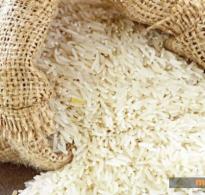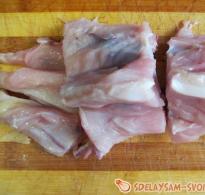Preparations from green cabbage leaves. Gray cabbage soup for the winter
Sauerkraut Gray cabbage for Vologda cabbage soupDancing from the stove to the computer!!
Preparation for green sauerkraut cabbage soup
In the Vologda region in October, here and there, the sound of a chopper is heard: people are chopping cabbage soup. This is a whole ritual, a certain stage, ending the garden season and starting a new one - a long cold winter. Kroshevo is the top leaves of white cabbage, dyed green. Since they are tougher than internal ones, they were not chopped, but chopped into small crumbs. Hence the name came from. By the way, when salted, such leaves turn gray, which is why cabbage soup with kroshev was called “gray”. Initially, cabbage soup with crumble was cooked not from a well-fed life. Peasants sold heads of cabbage at the fair, and left only peeled upper leaves for themselves. But, because of the special, pungent flavor, cabbage soup with kroshev turned out to be tastier than with ordinary cabbage.
Green cabbage soup, and they also talk about them: gray, pickled or just winter, are not loved by everyone. Many have never even heard of this dish. But if anyone has tried them, they will never forget the taste. I offer you a recipe for preparing shanits. This recipe was extremely unlucky for two reasons: because of the gray color and the duration of cooking the main dish from them. Added a fly in the ointment and the old name for gray cabbage soup - servile. At the same time, it is completely forgotten that it was cabbage soup from gray sauerkraut that was eaten for centuries during long winter-spring fasts, and those years were very difficult from all sides. What attracts in this recipe is the almost free feedstock - you need green cabbage leaves, which remain in huge quantities after harvesting white cabbage and go, at best, to the compost heap. An additional plus is the taste of cabbage soup, which is obtained only from such leaves and good health even for those who do not eat pickled vegetables for health reasons. By the way, there have been numerous attempts to introduce gray cabbage soup into the diet of convalescents, but they all failed for the above reasons.
To prepare kroshev, you only need covering green cabbage leaves, a sharp knife, salt and a handful of rye flour or a few crusts of rye bread. The leaves are washed, thickened petioles are removed and cut as small as possible. It is not necessary to scald the leaves to make them more soft and remove bitterness, if two subtleties are observed, everything turns out amazingly. One of the main secrets of good gray sauerkraut is very small cutting or cutting. The crushed mass is placed in a glass jar or a wooden barrel, on the bottom of which a handful of rye flour or a few crackers of rye bread are necessarily thrown. Salts are added, as someone used to, and put in a warm place for fermentation. Now the second secret: every day you need to pierce the entire mass to the bottom, only in this case the fermentation will go quickly and throughout the depth of the workpiece. For sourdough, 4-7 days are enough, after which the container with cabbage is stored in a dark, cool place, you can simply freeze it, as was done in the old days.
We will need:
Green cabbage leaves. Those that usually all people throw away if they do not chop cabbage soup. They must be clean, not sick, not eaten by caterpillars. Several loose heads of cabbage and light green covering leaves. They are needed to “dilute” the green leaves so that the window is not too dark. Carrot. Approximately 200 g per 10 liters of shanits. Coarse salt. A handful for 10 liters of shanits. Approximately two handfuls of rye flour.
Cut out thick veins from green cabbage leaves.

Rinse thoroughly.

We put them in a pile and chop with a knife. It turns out like this.


Add some white cabbage. We take the loosest heads of cabbage. They are also with greens, for cabbage soup - that's it. Covering light green leaves are well suited here.


Let's add them too. When all the leaves are chopped, three carrots on a grater and add it to the chopped green leaves.

Add salt. We mix.
Next comes the process identical to sauerkraut. We put the chopped leaves in a container where the cabbage soup will ferment. I have a small plastic bucket. Add rye flour, or rye bread crusts if there is no flour. Scald with boiling water, pour into cabbage in boiling water. Leave in a warm place for 2-3 days. During fermentation, cabbage soup must be crushed with clean hands or pierced with a wooden stick.
After two or three days, we take them out to the cold. Shchi is stored in the cellar (in jars or in the same container where it was fermented, under oppression), in the refrigerator or in the freezer, arranged in bags into portions. It should be noted that when frozen, cabbage soup does not lose its qualities.
Bad notes: It is not necessary to add carrots to the preparation, carrots did not give any flavor, the taste of carrots did not improve, it did not enrich, I did not like pickled carrots.
Before giving the recipe for kroshev, I want to tell you how I found out about it.
My mother is a Muscovite. She spent her military childhood in a small village near Moscow. Naturally, like every villager of that time, their family had both chickens and goats and a huge garden behind the house.
Having married her father, she had to move to Samara (Kuibyshev).
Grandmother did not love her mother, but what is there - she hated it. And constantly harassed her with reproaches. Most of all, I remember two of them - about the fact that Muscovites wash themselves in the stove, and about the fact that they eat green cabbage leaves, while we have a bathhouse and we give cabbage leaves to chickens.
Many, many years have passed and I decided to find out what it is - a crumb of green leaves.
Judging by my surveys, I can say for sure that the indigenous Samara people have not even heard of such a dish. I had to call Moscow and puzzle my Moscow relatives.
I found out the recipe. And along the way, she listened to a delicious story about how these very leaves were flogged in a special trough, then fermented in a special low barrel, and then in winter they cut pieces of crumble from this barrel with an ax and cooked soup from it.
After listening to all the stories, I went to the dacha for cabbage.
She collected leaves, lathered, chopped, along the way organizing herself a huge callus on her finger.
Fermented. I'm waiting for it to work.
And cabbage does not ferment. There is no aroma of lactic acid fermentation.
I already added sugar, and put yogurt, and even sprinkled special kefir bacteria. Cabbage is the same as on the first day - hard, green, with the aroma of a steamed bath broom.
She stood with me until January and I decided to throw it away. But I still feel sorry for my work, so I took a handful of this cabbage, washed it from salt and poured it into the prepared cabbage soup.
I was simply shocked by the result. Usually I cook cabbage soup according to an old family recipe - I cook it for a long time, over very low heat, imitating soaring in the stove.
All vegetables become soft and tender, and I additionally use potatoes in mashed potatoes.
So, when kroshev was added to cabbage soup, they got some special taste - in the boiled mass, hardish pieces come across that break the uniform softness of vegetables, giving exceptionally pleasant tactile sensations.
COMPOUND
1 kg of green (top) cabbage leaves, 30 g of salt, 1 teaspoon of sugar, 0.5 cups of water, if possible - 1 tablespoon of rye flour
It is desirable to harvest crumbly in late August - early September. The later, the leaves become stiffer and rougher.
Cut green leaves from cabbage.

Rinse each sheet well. Shake off water thoroughly.

Take several sheets and fold them in a pile.
Cut the leaves with a large sharp knife, first into thin strips, and then into squares.
After that, the chopped squares need to crumble as small as possible. When crushing, the knife makes "rocking" movements - from the tip to the handle and back.

Place the chopped leaves in a large bowl.
When shifting crumbly, you need to rub it a little in your hands.
Dilute salt and sugar in cold boiled water.
Pour the brine over the leaves and stir.

Place an inverted flat plate on top and place a load, for example, a 3-liter jar of water.

Leave crumble at room temperature for 5~7 days.
Take a clean jar of a suitable size and scald it with boiling water.
At the bottom of the jar, if possible, pour about 1 tablespoon of rye flour. (The amount of flour remains the same regardless of the size of the jar. A handful of flour is placed on a 10-liter keg.)
Transfer crumbly to a jar. After every 3~4 shifted spoons, crumble strongly with a wooden pestle.

Tie the neck of the jar with several folds of gauze and put it in a cool place, for example, on a balcony.
Periodically add water to the jar, as it evaporates quickly.
Often, when harvesting cabbage, we regret to find that not all the forks have curled, some have remained at the stage of tender green leaves and the beginning of tying heads, but such cabbage is not suitable.
It is a pity to leave such a vitamin richness to perish. After all, as they say, in the summer you kick with your foot, in the winter you bend it into a pie.
To do this, we need to make a harvest for green cabbage soup for the winter.

To prepare green cabbage, we need:
green cabbage leaves -1 kg
white cabbage - 1 kg
carrots - 1kg
onion - 0.5 kg
tomatoes - 0.5 kg
sweet pepper - 0.5 kg
two celery roots - 30g
vegetable oil - 300g
vinegar 70% in portions in each jar, depending on the volume of the jar
water - 1 liter
Cooking:
Wash green cabbage leaves and cabbage forks thoroughly, cut them like cabbage soup, not large and not small.

We clean the onions, wash them and cut them into a quarter of the ring (or smaller).

My carrots, scrape carefully (keep as much peel as possible), three on a coarse grater.

We cut the pepper into cubes.

Cut the celery root into small pieces.

We cut the tomatoes into cubes.

Pour chopped vegetables into a saucepan, pour 1 liter of water, 300 g of vegetable oil, close the lid and bring to a boil over low heat (so as not to burn). Cook, stirring occasionally for twenty minutes. Ten minutes before the end of cooking, add salt 70g to the cabbage soup. Very colorful and beautiful cabbage soup is obtained.

Simultaneously with cooking the cabbage soup, we set the jars to be sterilized. We lay out the cooked cabbage soup in sterile jars. Pour 70% vinegar under the lid. Pour an incomplete teaspoon into a two-liter jar, 0.5 teaspoon into a one and a half liter jar and 1/3 teaspoon into a liter jar.

Cover with a sterile lid and set to sterilize in a large saucepan. We sterilize a liter jar for 10 minutes, a one and a half liter jar for 15 minutes, a two-liter jar for 20 minutes.
Each hostess tries to thoroughly prepare for the winter, making a variety of preparations. But is it known that for the winter you can make a variety of dressings for the first hot dishes? Not only possible, but also necessary, since such ready-made bases for soups will save a lot of time. They will be discussed further.
What vegetables are used
For preparations in soups for the winter, you can take your favorite vegetables and roots:

and many others.
Use similar preparations from vegetables can be for a variety of first courses, depending on the vegetables. Having made a universal preparation for the winter, it can be used in the preparation of cabbage soup, soups, borscht and other dishes.
Universal preparation for the winter with cabbage
You need to take for the recipe:
- celery, parsley (greens) - per kilogram;
- 600 g of salt;
- white cabbage, cauliflower, carrots, sweet pepper pods, half a kilo of onions.
 You also need to prepare a brine. For it, salt (40 g) and citric acid on the tip of a knife are needed per liter of water. All, seasonings required by the recipe vegetables, you need to thoroughly wash, chop arbitrarily, sprinkle with salt and tamp into prepared jars. Then start preparing the brine. Dissolve salt in water, boil.
You also need to prepare a brine. For it, salt (40 g) and citric acid on the tip of a knife are needed per liter of water. All, seasonings required by the recipe vegetables, you need to thoroughly wash, chop arbitrarily, sprinkle with salt and tamp into prepared jars. Then start preparing the brine. Dissolve salt in water, boil.
Pour the chopped vegetables with the resulting hot liquid. Vegetable dressing is ready. Seal jars with lids and send to a cold place for storage. The recipe for this blank can be made individual, instead of the indicated ingredients, add others. In winter, all that remains is to get a jar of soup and cook your favorite first course.
Shchi dressing recipe
It is made from cabbage. Necessary:
- one and a half kilograms of cabbages;
- tomatoes, carrots, onions, sweet pepper pods, 600 g each;
- half a glass of granulated sugar;
- the same amount of vinegar;
- salt - 2 large spoons.
First of all, you need to chop the vegetables: finely chop the cabbage, onions and tomatoes, grate the carrots, chop the sweet pepper into strips. Combine everything, mix and put on fire to stew for 15 minutes.
In vegetable mixture add all other ingredients except vinegar and continue to simmer for 5 minutes. stirring constantly. Add vinegar to the workpiece and turn off the fire. Arrange the blank for the winter in jars and close with lids.
Another version of the recipe for dressing for cabbage soup for the winter
Take:

First, thinly chop the cabbage for soup. Then the tomatoes are washed and cut into cubes. Onion heads are peeled, chopped into cubes. Washed and peeled carrots are rubbed on a grater.
Now the vegetables can be combined. Add salt, sugar and vegetable oil to them. Put the vegetables in a saucepan on the fire and simmer for 35 minutes. Pour vinegar into the preparation, add all the seasonings necessary for the recipe and mix. Boil again and put into jars. Seal, turn over, wrap. Once the workpiece has cooled down, move it to a cool place. If necessary, in winter, get dressing from vegetables and use it.
Another version of the dressing recipe for winter cabbage soup
Necessary:

All soup vegetables wash well, chop at your discretion and put on fire. Simmer for 1.5 hours. 30 min. before the end of cooking, add tomato paste and all other components required by the recipe to the mixture of vegetables.
The recipe for such a dressing can not only be used for cabbage soup, but also used to make other soups. You can even make lazy cabbage rolls with it if you add rice and minced meat to the vegetable mixture.
And here is an arbitrary vegetable recipe
You need to take the following vegetables: carrots, cabbage, onions. Add your favorite spices to them. The number of ingredients as desired. Cut vegetables, mix, shift in a large container and put to stew. When ready, spread the hot vegetable mixture into jars and roll up.
Such a vegetable preparation can be eaten as a salad in winter. It turns out very tasty.
How to prepare a blank for green cabbage soup with wild garlic
Necessary:

For cooking according to this recipe dressings all fresh herbs should be thoroughly washed, dried and chopped. Then transfer to an enamel bowl. Pour in water, add salt and put on fire. Boil 5 min. then transfer the blank for the winter to prepared jars and roll it up.
Harvesting for the winter for green cabbage soup from sorrel
You will need:
- sorrel - 800 g;
- chives - 200 g;
- carrot tops - 20g;
- water - 200 ml;
- salt - 5 g.
Required according to the recipe dressing, wash fresh herbs, chop and place in a bowl. Pour the required amount of water, add salt and cook for 5 minutes. Vegetable dressing is ready. After that, pour into sterile jars and seal.
blanks soups for the winter, including cabbage soup are very convenient, useful and practical.
How to cook crumble from green cabbage leaves for the winter? The recipes for this blank, as well as other issues, we will consider in the article. Today, many do not throw out the lower tops of cabbage, but cook crumbly from it. Green cabbage leaves are able to secrete special acidic enzymes. Thanks to them, the workpiece has its own unusual and unique taste. Villagers in Russia to this day use the lower cabbage leaves not out of prudence, but because of tradition and indescribable taste.
Tools
Often people prepare crumble for the winter from green cabbage. This ingredient in gray cabbage soup is very easy to cook. Previously, a large number of dishes were prepared from green cabbage leaves. First, the tops were crushed with the help of a special stray (chopped), crushing it and folding it into you can use a large knife. To prepare crumble for the winter from green cabbage leaves, you need to take: 1 tsp. sugar, 50 g of salt, 1 kg of green (top) cabbage leaves, half a glass of water, 1 tbsp. l. rye flour.
How to cook?
So, we prepare kroshevo for the winter from green cabbage leaves. First, rinse the leaves thoroughly and shake off the water from them. Put them in a pile and first cut into thin strips, and then chop into squares. Then grind it all with rocking movements from the knife handle to its tip, and vice versa.
Now place the crushed leaves in a large saucepan. Move the crumb and at the same time crush it with your hands. Prepare the brine. To do this, pour sugar and salt with cold water, mix thoroughly and pour into a pan with crumble.

Next, lay a plate on the cabbage crumb and put oppression on top. Leave for a week in the room. Now take a three-liter jar, cover its bottom with rye flour and transfer the cabbage crumble here. It must be well tamped with a wooden rolling pin. Tie the neck with a piece of gauze and put it in the cold. Water will evaporate in it, so it needs to be added occasionally. Harvested kroshevo for the winter from green cabbage leaves is ready! Before cooking cabbage soup, be sure to rinse it with cold water.
Manufacturing nuances
So, you already know how to cook crumble from green cabbage leaves for the winter. Shchi is prepared from it, which owe their unusual taste to cabbage leaves that were not included in the head of cabbage. They are usually crushed in a wooden barrel. They are cut into crumbs with a cut - a special stray, as we talked about above. A cut is a metal open "eight" on a stick. Thanks to this shape, this tool grinds cabbage, including those that have stuck to the sides of the barrel. To create crumbling in wooden boxes, a different cut is used, the configuration of which is similar to the armament of the king's guards from the famous cartoon about the Bremen Town Musicians.

How is it prepared in the regions?
Preparation of kroshev for the winter from green cabbage leaves in different regions is carried out in different ways. This dish is also called differently. In the Pskov province - this is a khryapa, in Siberia - a shanitsa, and in the remote villages of the northwestern region of Russia - sour or crumbly. It is the basis for the manufacture of shtey or gray cabbage soup. In different regions, their distinctive features of fermentation of the workpiece we are considering have been preserved.

Someone pours a handful of rye flour, somewhere they do not add salt, but somewhere they put a loaf of black bread. It is unlikely that a city dweller will be able to fully reproduce the technique for creating crumble, but believe me, its taste is worth it.
Novgorod recipe
So how to cook delicious crumble for the winter from green cabbage leaves? We present to your attention the recipe according to which this dish is prepared in the villages of the Novgorod region. It is on it that it turns out crumbly with the most refined and original sourness.
So, wash the cabbage leaves and load them into a barrel. Put carrots here too (as many as you see fit). Carrots can be grated, but then its taste will not be the same as that of a cut one. It must be remembered that finely grated carrots turn crumbly yellow-orange, which looks unappetizing. To prevent damage to the bottom of the barrel, lay a couple of cabbage leaves on it.

As soon as a portion of carrots and cabbage has been crumbled, transfer it to an enameled basin. Then sprinkle with salt to taste and grind with your hands. The mixture should taste and look identical to fresh cabbage salad. Now transfer it to an enameled clean fermentation tank.
And so on - chop up a portion of carrots and cabbage with a slice in a barrel, shift for grinding and then send it to the tank. After preparing all the cabbage in this way, cover it with a lid. The lid should be slightly smaller in diameter than the tank. Put a heavy oppression on top and wait for the juice to appear.
fermentation stage
Agree, it is very easy to cook crumble for the winter from green cabbage leaves. The photo of this blank surprises everyone. What is the stage of fermentation of this dish? In green cabbage leaves, unlike white ones, there are few natural sugars. Therefore, the fermentation of kroshev is difficult. Depending on the "sugar content" of cabbage, to start fermentation, it needs help in the form of a crust of black bread or a handful of rye flour.
Kroshevo ferments for 5-7 days. During this period, from under the oppression, a thick foam appears at the edges, in which the bitterness of cabbage leaves is located. Therefore, it must be removed.
Once a day, the oppression must be removed and with a clean stick (in the villages a stick is used from a cut) to “pierce” holes in the cabbage (to the bottom) in the center and in a circle. Air comes out through these holes, and a peculiar smell of fermenting cabbage leaves comes from the mass itself. If you do not make holes, then it will turn out crumbly with bitterness. In fact, cabbage needs to breathe fresh air! Also, it must be completely covered with brine. If your cabbage juices are not enough, you need to pour in a little warm water.

After about seven days, all odors will disappear, the white foam will complete its formation, and the crumb will acquire an amazing “sour” taste and green-gray color. This product is very different from regular sauerkraut.
In the villages, the finished crumble is saved in the basement. A city dweller can send it to the freezer and pick it up a little to make gray cabbage soup from crumble.
cabbage soup
Shchi from kroshev is cooked in a variety of ways. The ideal option is the Russian stove. Previously, in the villages they cooked simply - they poured crumbs into a cast iron, added chopped carrots, onions, potatoes, meat. Then they covered it with a lid and put it in the oven in the morning. As a result, cabbage soup from kroshev was languishing (not boiling) and was ready for dinner.
Identical conditions can be created in a pressure cooker. So, pour ice cream crumble for a couple of minutes with cold water. Then squeeze well and put in a pressure cooker. For 400 g of crumble, 4 liters of water are usually poured. Next, the pressure cooker must be put on high heat until the valve is activated. After that, the fire must be reduced (but there should be steam pressure under the lid) and cook for 4 hours.
Then cool the lid of the pressure cooker under running water, remove it. Put in crumbly chopped carrots, parsley, bay leaf, a piece of meat and a whole potato. Cover tightly with a lid and cook for another hour and a half. After the lid has cooled down, you can remove it. Take out the potatoes, add a little broth and mash them with a potato masher.
Return all ingredients to the saucepan. Serve cabbage soup with cream or sour cream, garlic and herbs.
Kroshevo in urban conditions can be simmered for three to four hours on low heat in the oven or on the stove, adding a little water. Care must be taken that the crumb does not burn. At this time, in another bowl, boil the meat broth (pork or beef) - also over low heat. Next, add chopped carrots, bay leaves, parsley, whole potatoes to the meat broth. Then combine the finished crumble with the broth, cook for 30-40 minutes. After that, take out the potatoes and mash with a small amount of broth with a crush, and free the meat from the bones and disassemble it into fibers. Again, combine everything in a saucepan. Serve with garlic and chopped herbs. Bon appetit!






